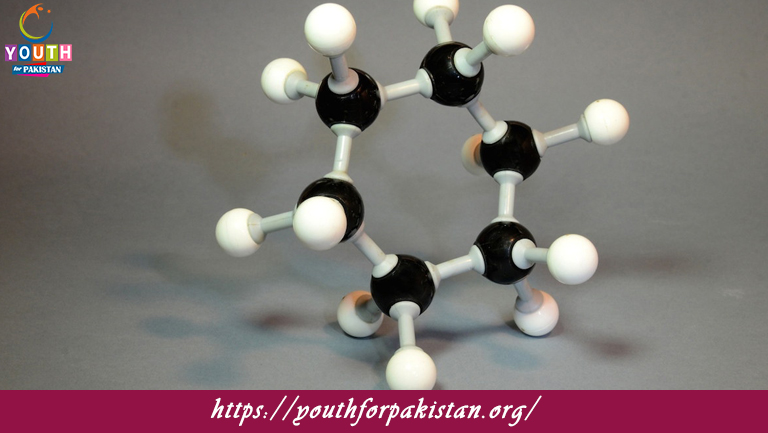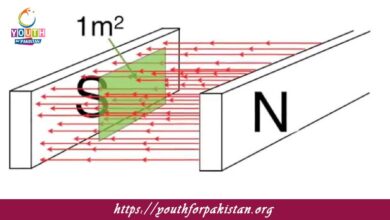Benzene Structure MDCAT MCQs with Answers

Welcome to the Benzene Structure MDCAT MCQs with Answers. In this post, we have shared Benzene Structure Multiple Choice Questions and Answers for PMC MDCAT 2024. Each question in MDCAT Chemistry offers a chance to enhance your knowledge regarding Benzene Structure MCQs in this MDCAT Online Test.
What is the type of hybridization of carbon atoms in benzene?
a) sp
b) sp2
c) sp3
d) sp3d
The bond angle between the carbon-hydrogen bonds in benzene is approximately:
a) 90°
b) 109.5°
c) 120°
d) 180°
Benzene is best described by which type of resonance structure?
a) Kekulé structure
b) Dewar structure
c) Pericyclic structure
d) Cyclohexatriene structure
How many π-bonds are present in the benzene ring?
a) 3
b) 6
c) 1
d) 2
The resonance energy of benzene indicates that:
a) Benzene is less stable than expected
b) Benzene is more stable than expected
c) Benzene has no resonance energy
d) Benzene is a weak acid
What kind of structure does benzene exhibit due to resonance?
a) A single Kekulé structure
b) A set of alternating single and double bonds
c) A uniform distribution of electron density
d) A cyclic structure without resonance
Which model describes the delocalized π-electrons in benzene?
a) Localized π-bond model
b) Molecular orbital model
c) Lewis dot model
d) VSEPR model
The bond lengths in benzene are:
a) Equal to single bonds
b) Equal to double bonds
c) Intermediate between single and double bonds
d) Zero
The structure of benzene is best described as:
a) Planar and symmetric
b) Three-dimensional and asymmetric
c) Linear
d) Tetrahedral
What is the number of π-electrons in benzene?
a) 4
b) 6
c) 2
d) 8
Benzene’s resonance structures are:
a) Equivalent and contribute equally to the hybrid
b) Non-equivalent with one structure more stable
c) Only one major resonance structure
d) No resonance structures
In the benzene ring, the electrons in the π-system are:
a) Localized between two carbon atoms
b) Delocalized over the entire ring
c) Fixed in one position
d) Found in the sigma bonds
Which feature of benzene contributes to its stability?
a) Lack of resonance
b) Uniform bond length
c) High reactivity
d) Non-planarity
Benzene’s structure is often represented as:
a) A single line structure
b) A hexagon with alternating single and double bonds
c) A set of dots around a central carbon
d) A chain of alternating double bonds
In benzene, the bond angles are approximately:
a) 90°
b) 120°
c) 180°
d) 109.5°
Which model does NOT accurately represent the structure of benzene?
a) Resonance model
b) Kekulé structure
c) Molecular orbital model
d) Dot-and-cross model
Benzene’s delocalized electrons contribute to its:
a) Low melting point
b) High stability
c) High reactivity
d) Poor solubility in organic solvents
The benzene ring is classified as:
a) An aromatic system
b) An aliphatic system
c) A cycloaliphatic system
d) A non-aromatic system
The molecular orbital theory explains benzene’s:
a) Non-planarity
b) Single and double bond alternation
c) Uniform bond lengths and angles
d) Lack of aromaticity
In benzene, the carbon-carbon bonds are:
a) Longer than in a typical double bond
b) Shorter than in a typical single bond
c) The same length as in a typical single bond
d) Equal in length to both single and double bonds
The π-electrons in benzene:
a) Are localized above and below the plane of the ring
b) Are fixed in the plane of the ring
c) Are absent in the benzene ring
d) Are found only in alternating bonds
The bond angles in benzene are consistent with:
a) A tetrahedral geometry
b) A linear geometry
c) A trigonal planar geometry
d) An octahedral geometry
The stability of benzene is due to:
a) The presence of localized π-bonds
b) The resonance energy of the molecule
c) The absence of any π-electrons
d) The non-planar structure
Benzene’s electronic structure is best described as:
a) A single resonance structure
b) A combination of multiple resonance structures
c) A chain of alternating double bonds
d) An ionic structure
The true structure of benzene can be best visualized as:
a) A set of alternating double bonds
b) A hexagon with equal bond lengths
c) A single Kekulé structure
d) A non-planar ring
Benzene’s hybridization results in:
a) sp hybridization
b) sp2 hybridization
c) sp3 hybridization
d) sp3d2 hybridization
The aromaticity of benzene is attributed to:
a) The presence of alternating double bonds
b) The delocalization of electrons over the ring
c) The absence of a ring structure
d) The localized nature of its π-electrons
Benzene’s ring structure contributes to:
a) High reactivity
b) High stability
c) Low bond strength
d) Low boiling point
Which model explains the equal bond lengths in benzene?
a) Resonance model
b) Kekulé model
c) VSEPR model
d) Molecular orbital model
The bond length in benzene is:
a) Equal to the length of a double bond
b) Intermediate between single and double bond lengths
c) Equal to the length of a single bond
d) Longer than a single bond
The resonance energy of benzene is a measure of its:
a) Low stability
b) High stability
c) Low reactivity
d) High reactivity
In benzene, the π-electrons are distributed:
a) Locally between two carbon atoms
b) Evenly around the ring
c) Only on the carbon-hydrogen bonds
d) In the σ-bonds
The aromatic character of benzene is due to:
a) Its cyclic structure
b) Its planar structure
c) The delocalization of π-electrons
d) Its presence in organic solvents
The bond angles in benzene are closest to:
a) 90°
b) 109.5°
c) 120°
d) 180°
Benzene’s resonance structures are considered to:
a) Be the same
b) Contribute equally to the actual structure
c) Be different in stability
d) Not affect the overall stability
The number of σ-bonds in the benzene ring is:
a) 6
b) 12
c) 3
d) 9
In benzene, each carbon atom is involved in:
a) Three σ-bonds and no π-bonds
b) Two π-bonds and two σ-bonds
c) Two σ-bonds and one π-bond
d) One σ-bond and one π-bond
The resonance hybrid of benzene results in:
a) Alternating double bonds
b) Equal bond lengths throughout the ring
c) Localized π-electrons
d) Non-planar geometry
The number of resonance structures of benzene is:
a) One
b) Two
c) Three
d) Six
Benzene’s electronic configuration leads to:
a) A planar and symmetric structure
b) A three-dimensional asymmetric structure
c) A non-planar structure
d) A linear structure
If you are interested to enhance your knowledge regarding Physics, Chemistry, Computer, and Biology please click on the link of each category, you will be redirected to dedicated website for each category.





